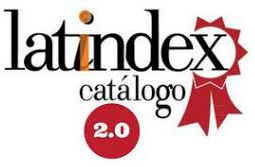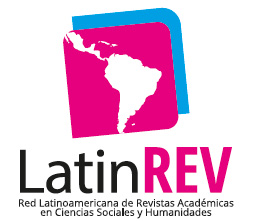Child YouTubers
The use of minors as advertising trendsetters
Abstract
Taking into account the previously published works by others authors, the aim in this case is twofold. On the one hand, this study pretend to analyze the presence of the brands in the channels of the selected children’s youtubers. On the other hand, and given that none of the previous research have analyzed childish youtubers as minors who, due to their recognition, have ended up becoming characters, this work propose the need to analyze these youtubers from the point of view of their identity and how they have gone from being prosumers to becoming reference characters for those who watch their channels. Applying a qualitative-descriptive methodology, for the first stage of the study, an analysis sheet consisting of twelve indicators has been prepared. This sheet that provide data based on the activity carried out by children in each of their videos, as well as the presence of brands in each one of them. In a second stage, the youtubers analyzed will be subjected to an analysis form the point of view of their iconographic, psychological and sociological dimension, which are special features of the construction of fictional characters. The results obtained demonstrate, on the one hand, that brands are not always present showing products suitable for children, on the other hand, the the youtubers analyzed represent themselves as characters, forging an identity iconographic, psychological and sociological. In some cases, the youtubers represent stereotypes which transmit harmful attitudes and behaviors to children.
Downloads
References
Asociación para la Investigación de Medios de Comunicación (AIMC) (2018). AIMC niñ@s 2018. España. Obtenido el 10 marzo de 2020 de https://www.aimc.es/otros-estudios-trabajos/aimc-ninos/
Aran Ramspott, S., Fedele, M. y Tarragó, A. (2018). Funciones sociales de los Youtubers y su influencia en la pre-adolescencia. Revista Comunicar, 26(57), 71-80.
Aznar Díaz, I., Trujillo Torres, J. M., Romero Rodríguez, J.M. y Campos Sotos, M. N. (2019). Pixel-Bit. Revista de Medios y Educación, 56, 113-128.
Berzosa, M. (2017). Youtuber y otras especies: el fenómeno que ha cambiado la manera de entender los contenidos audiovisuales. Barcelona: Ariel.
Blades, M., Oates, C. y Li, S. (2013). Children’s recognition of advertisements on television and on Web pages. Appetite, 62, 190-193.
Burgess, J. y Green, J. (2013). YouTube: Online video and Participatory Culture. Cambridge: Polity Press.
Casetti, F. y Di Chio, F. (2007). Cómo analizar un film. Barcelona: Paidós.
Chatman, S. (1990). Historia y discurso. La estructura narrativa en la novela y en el cine. Madrid: Taurus Humanidades.
Chau, C. (2010). Youtube as a participatory culture. New Directions for Youth Development, 128, 65-74.
Correa, T., Straubhaar, J., Chen, W. y Spence, J. (2015). Brokering new technologies: the role of children in their parents’ usage of the internet. New Media & Society, 17(4), 483-500.
eMarketer Report (2016). US Kids and Digital: Gauging How Digital These Digital Natives Really Are. Obtenido el 10 de marzo de 2020 de https://www.emarketer.com/Report/US-Kids-Digital-Gauging-How-Digital-These-Digital-Natives-Really/2001911
Evans, N. J., Grubbs Hoy, M. y Carpenter Childers, C. (2019). Parenting “YouTube Natives”: the impact of pre-roll advertising and text disclosures on parental responses to sponsored child influencer videos. Journal of Advertising, 47 1-21.
Feijoo, B. y Pavez, I. (2019). Contenido audiovisual con intención publicitaria en vídeos infantiles en YouTube: el caso de la serie Soy Luna. Communication & Society, 32(1), 313-331.
Fernández Torres, M. J. y Chamizo Sánchez, R. (2020). Youtubers infantiles, los nuevos protagonistas de la comunicación comercial. Repositorio Institucional de la Universidad de Málaga.
Forbes (2017). Top Influencers: Kids. EE.UU. Obtenido el 10 de marzo de 2020 de https://www.forbes.com/top-influencers/2017/kids/#53b906232643
Gallardo Camacho, J. (2013). Análisis del fenómeno YouTube en España: relación con los espectadores y con los generadores de contenidos tradicionales. Revista Luciérnaga, 5(9), 57-58.
Gallardo Camacho, J. y Jorge Alonso, A. (2010). La baja interacción del espectador de vídeos en Internet: caso YouTube España. Revista Latina de Comunicación Social, 65, 421-434.
Hargittai, E. y Hinnant, A. (2008). Digital inequality: differences in young adults’ use of the Internet. Communication Research, 35(5), 602-621.
Hoffner, C. y Buchanan, M. (2005). Young Adults Wishful Identification with Television Characters: the role of perceived similarity and character attributes. Media Psychology, 7, 325-351.
Hudders, L. y Cauberghe, V. (2018). The Mediating Role of Advertising Literacy and the Moderating Influence of Parental Mediation on How Children of Different Ages React to Brand Placements. Journal of Consumer Behavior, 17, 197-210.
Jenkins, H. (2006). Convergence Culture. Where Old and New Media Collide. Nueva York: New York University.
Kunkel, D. y Castonguay, J. (2012). Children and advertising: content, comprehension and consequences. En Singer D. G. y Singer, J. L. (Eds.), Handbook of children and the media (pp. 395-418). Los Ángeles: Sage.
La Vanguardia (2019). Youtubers infantiles en el punto de mira. España. Obtenido el 9 de marzo de 2020 de https://www.lavanguardia.com/vida/20191014/47952595666/youtuber-ninos-influencers-las-ratitas-mikeltube-juega-con-adri.html
León, L. (2018). Niños Youtubers y el proceso de creación de videos: evidencia de competencias transmedia en acción. Comunicación y Sociedad, 33, 115-137.
Livingstone, S. (2003). Children’s use of the internet: reflections on the emerging research agenda. New Media & Society, 5(2), 147-166.
Livingstone, S. (2009). Young people and the new media: processes of diffusion, appropriation and use. (Translated into German). En Schorr, A. (Ed.), Grundlagen der Fugendmedienforschung-fünf Perspektiven (pp. 301-333). Alemania: VS Verlag für Sozialwissenschaften
Livingstone, S., Mascheroni, G. y Staksrud, E. (2015). Developing a Framework for Researching Children’s Online Risks and Opportunities in Europe. Londres: EU Kids Online.
Lorente, C. (2017). Youtubers. Las nuevas estrellas mediáticas. Tiempo, 1788, 58-63.
Marketing4ecommerce (2020). 20 niños youtubers que triunfan en España… y el mundo (2020). España. Obtenido el 9 de marzo de 2020 de https://marketing4ecommerce.net/10-ninos-Youtubers-que-triunfan-en-espana-el-mundo-2019/
Marsh, J. (2016). Unboxing videos: co-construction of the chid as Cyberflâneur. Discourse: Studies in the Cultural Politics, 37(3), 369-380.
Martínez, C. y Olsson, T. (2019). Making sense of Youtubers: how Swedish children construct and negotiate the Youtuber Misslisibell as a girl celebrity. Journal of Children and Media, 13(1), 36-52.
Másquenegocio (2017). Las estadísticas de YouTube en 2017. España. Obtenido el 10 de marzo de 2020 de https://www.masquenegocio.com/2017/10/21/estadisticas-youtube-2017/
Medrano, C. y Martínez de Morentín, J. I. (2012). Socialización y televisión: perfiles de adolescentes en un estudio transcultural. Revista Internacional Journal of Developmental and Educational Psychology, 1(1), 657-682.
Montes, M., García, A. y Menor, J. (2018). Los vídeos de los adolescentes en YouTube: características y vulnerabilidades digitales. Revista Comunicar, 24(54), 61-69.
O’Connor, C. (2017). Forbes Top Influencers: Meet the kids making millions reviewing toys, rapping and more. Obtenido el 10 de marzo de 2020 de https://www.forbes.com/sites/clareoconnor/2017/12/20/forbes-top-influencers-meet-the-kids-making-millions-reviewing-toys-rapping-and-more/#75c20eeb4142
Panic, K., Cauberghe, V. y Pelsmacker, P. (2013). Comparing TV ads and advergame targeting children: the impact of persuasion knowledge on behavioral responses. Journal of Advertising, 42(2-3), 264-273.
Pérez-Torres, V., Pastor-Ruiz, Y. y Abarrou-Ben-Boubaker, S. (2018). Los Youtubers y construcción de la identidad adolescente. Revista Comunicar, 24(55), 61-70.
Ramos, M. y Herrero, P. (2016). Unboxing and brands: Youtubers phenomenon through the case study of evantubehd. Prisma Social, Revista de Ciencias Sociales,1 número especial, 90-120.
Raun, T. (2018). Capitalizing intimacy: New subcultural forms of micro-celebrity strategies and affective labour on YouTube. Convergence, 24(1), 99-113.
Rego, S. y Romero Rodríguez, L. M. (2016). Representación discursiva y lenguaje de los Youtubers españoles: estudio de caso de los gamers más populares. Index.comunicación, 6(1), 197-224.
Rodríguez, D. (2013). Memecracia. Los virales que nos gobiernan. Barcelona: Ediciones Gestión 2000.
Sabich, M. A. y Steinberg, L. (2017). Dircursividad Youtuber: afecto, narrativas y estrategias de socialización en comunidades de Internet. Revista Mediterránea de Comunicación, 8(2), 171-188.
Sáez, G. y Gallardo, J. (2017). La relación de los YouTubers con la publicidad y sus espectadores. El caso de YouTube España. Telos: Cuadernos de comunicación e innovación, 107, 47-57.
Sánchez, J. L. (2000). De la literatura al cine. Teoría y análisis de la adaptación. Barcelona: Paidós.
Sánchez Vera, M. M., Solano Fernández, I. M. y Recio Caride, S. (2019). El storytelling digital a través de videos en el contexto de la educación infantil. Píxel-Bit. Revista de Medios y Educación, 54, 165-184.
Segarra Saavedra, J. e Hidalgo Marí, T. (2018). Influencers, moda femenina e Instagram: el poder de prescripción en la era 2.0. Revista Mediterránea de Comunicación, 9(1), 313-325.
Suing, A., Salazar, G. y Ortiz, C. (2018). Are Latin American Youtubers Influential? En Antipode, T. y Rocha, A. (Eds.), Digital Science (pp. 341-348). Suiza: Springer.
Tur Viñes, V., Núñez Gómez, P. y González Ríos, M. J. (2018). Menores influyentes en YouTube. Un espacio para la responsabilidad. Revista Latina de Comunicación Social, 73, 1211-1230.
UNICEF (2017). Estado mundial de la infancia 2017: niños en un mundo digital. EE.UU. Obtenido el 10 de marzo de 2020 de https://www.unicef.es/sites/unicef.es/files/comunicacion/estado-mundial-infancia-2017.pdf
Westenberg, W. (2016). The influence of Youtubers on teenagers. (Tesis de Maestría). University of Twente.
The authors retain the copyright and guarantee the journal the right to be the first publication of the work. In case that a translation of the article already published in Austral Comunicación can be published in another journal, it is requested to record the original publication in the translated version.
The license used is CC BY-NC-SA, which allows sharing (copying and redistributing the material in any medium and format) and adapting (remixing, transforming and building on the material) under the following terms: attribution (acknowledge authorship) and non-commercial (the material cannot be used for commercial purposes). Update: February 1, 2022.
Austral Comunicación allows the author (s) to retain the publication rights without restrictions.











































